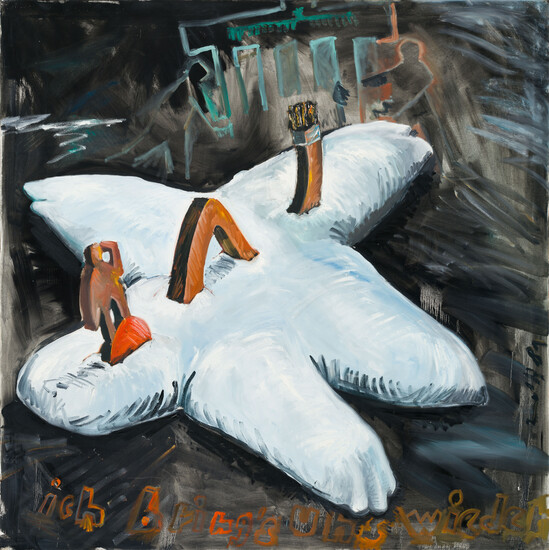Jörg Immendorff re-contextualised symbols and incorporated disparate iconographies including anthropomorphic images, human and animal figures in his works. The presented painting is part of a continuum of his remarkable artistic vision, reinforcing Immendorff's unique language in imagery. The iconographic language that Immendorff has cultivated throughout his career began while he was a student of Jospeh Beuys in the 60s. Immendorff responded to the chaos and social crises of a split Germany with a politically charged body of work and ridiculed the precious aesthetic object and elitist art traditions. In 1970s and 1980s, he invented a fictional territory populated by artists, intellectuals and politicians, and included German symbols such as eagles, flags, and emblems of East and West in the Café Deutschland and Café de Flore series. Immendorff’s paintings in the 80s closely relate to his idea about the reunification of Berlin. The white structure in the presented painting created in 1981, often appearing in his paintings during that period, is a swastika disguised as an American star symbolising imperialism. In the imaginary locale, he explored his thoughts on politics, his country, art and the world in general.
*Jörg Immendorff was one of the most important Neo-expressionists artists who most directly sought to reconcile his art with social activism, wrestling with the political divide that was Germany at the time. Immendorff was accepted as a student by Joseph Beuys. He was also a sculptor, stage designer and art professor.


